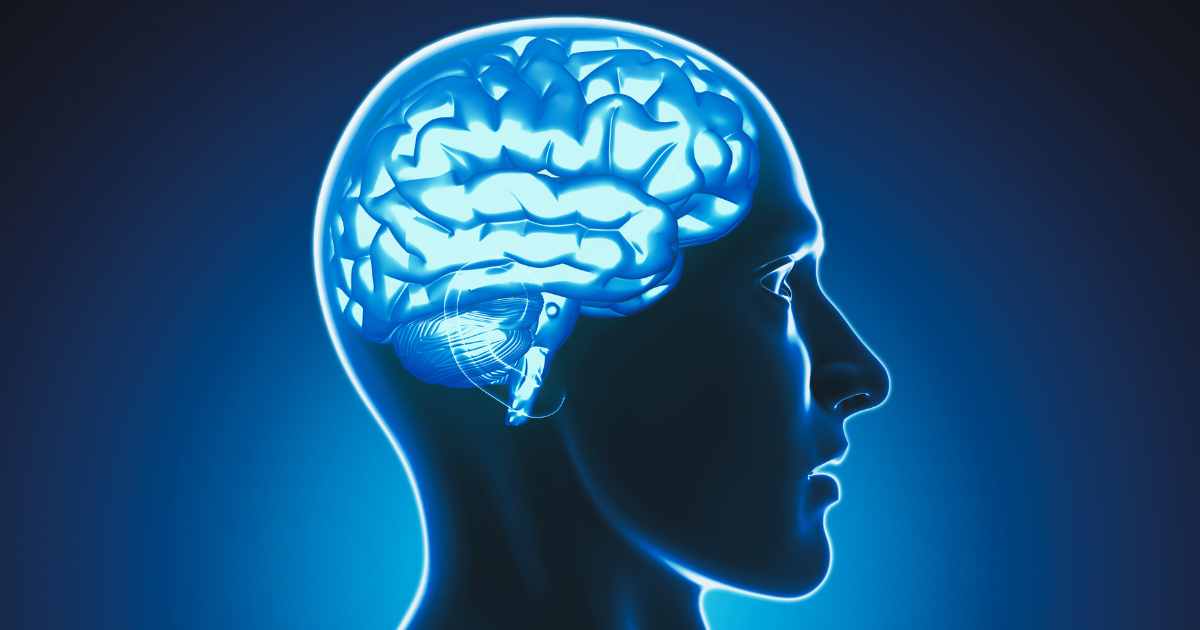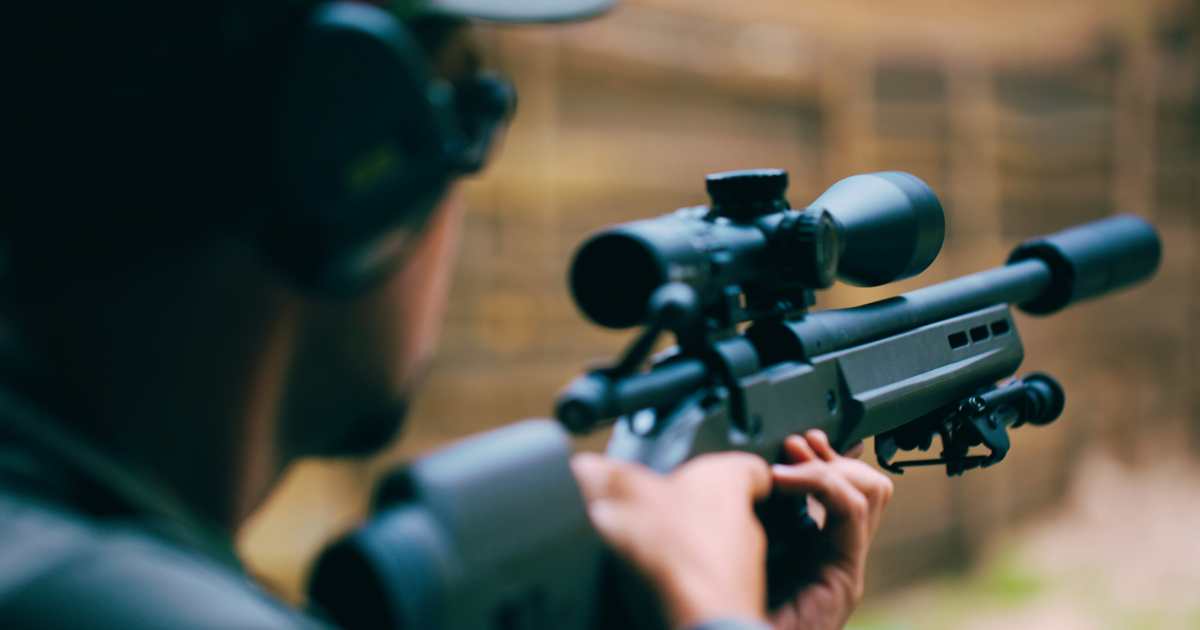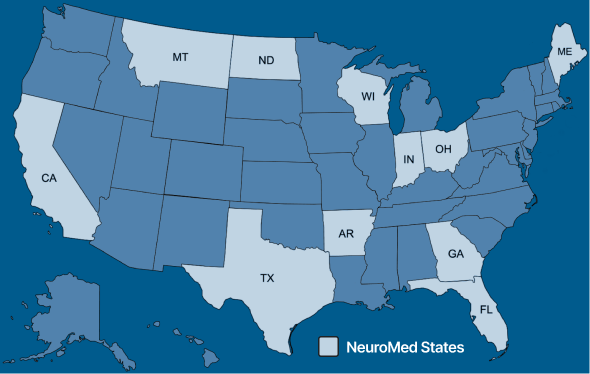The Tinnitus-Migraine Connection
Our research team has been pioneering the research on how tinnitus is a manifestation of atypical migraine. Here, I cover these important topics on the connection between tinnitus and migraines:
- How are tinnitus and migraines related?
- What is an atypical migraine?
- Can you get migraines secondary to tinnitus?
- A new answer to “What is a migraine”?
- What is otologic migraine?
- How are migraine and ear ringing related?
- What triggers tinnitus and migraines?
- What are the best treatment options for tinnitus?
How are tinnitus and migraines related?
Tinnitus and migraines are strongly linked. Both migraine and loud tinnitus are triggered by the same environmental factors such as stress, sleep disturbances, and dietary factors and are linked through the same neuroinflammatory process.
Here, we explore the neurological ties between migraine and chronic tinnitus, followed by an overview of innovative therapies we’ve developed at the University of California, Irvine. This novel approach to tinnitus management marks a substantial advancement in care, expanding the treatment options for tinnitus patients.
Can migraine cause tinnitus?
Yes! Migraine causes increased sensitivity to sensory information in the brain. This increased sensitivity leads the brain to pay more attention to the tinnitus sound and causes the brain to perceive the tinnitus at a louder level. The greater the activation of migraine, the louder the tinnitus.
Importantly, you don’t have to have a headache to experience migraines. Vestibular migraine and chronic tinnitus are two examples of when people experience migraines without headaches. In these cases, the migraine is not causing headache, it’s causing balance symptoms or tinnitus symptoms.
Migraine Tinnitus: A Migraine Without Headaches

Again, you can have a migraine without a headache. For some people, tinnitus may be the only manifestation of migraine that they experience.
This may sound like a surprise to you as everyone associates the term “migraine” with “headache”. However, migraine is not a singular disorder. There is a wide spectrum of migraine-related neurological conditions, including vestibular migraine and chronic tinnitus.
This is because migraine is more than just a headache type. Instead, new research suggests migraine is fundamentally a sensory processing disorder. With migraine headaches, the sensory symptom is head pain. With vestibular migraine, the sensory symptom is vertigo. With ‘migraine tinnitus’, the sensory symptom is loud ringing.
What are ‘classic’ migraine headaches?
‘Classic migraine’ is a type of headache disorder characterized by recurrent, severe throbbing head pain. Migraine sufferers often experience other sensory symptoms during a migraine attack, such as nausea, vomiting, sensitivity to light (photophobia), sensitivity to sound (phonophobia), subjective hearing loss, and tinnitus.
The head pain and other symptoms associated with these migraine attacks can be severe and disabling, affecting daily activities and quality of life. Here are some clinical features of a ‘classic’ migraine episode:
| Migraine Feature | Description |
|---|---|
| Headache Pain | Migraine patients have moderate to severe headache pain, lasting hours to days. Headache symptoms are often described as throbbing, |
| Aura | Aura refers to sensory disturbances (flashing lights or blind spots) before a headache starts. Not everyone with migraine experiences an aura. |
| Triggers | Migraine is commonly triggered by stress, certain foods, lack of sleep, hormonal changes, and environmental factors. |
| Symptoms | In addition to headache pain, a migraine attack can cause nausea, vomiting, sensitivity to light and sound, vertigo, subjective hearing loss, and tinnitus. |
| Phases | A migraine attack often occurs in phases. The four classic phases are: prodromal, aura, headache, postdrome. |
In the International Classification of Diseases – 10th edition (ICD-10), there are numerous different ways to characterize a migraine. The presence or absence of the following are to specify the diagnosis:
- Aura: Migraine is grouped into those with or without migraine auras (flashing lights).
- Intractable: An ‘intractable’ migraine attack does not respond to typical migraine medications, so this criteria refers to whether the migraine responds to medications or not.
- Status Migranosis: This refers to the time course of migraine. A migraine ‘with status migranosis’ is when the migraine experience lasts for longer than 72 hours.
What is a silent migraine?
A silent migraine, also known as an ‘atypical migraine’, is a type of migraine that occurs without the characteristic headache pain of a ‘classic’ migraine.
Silent migraine primarily manifests with other migraine symptoms, such as visual disturbances, nausea, sensitivity to light and sound, neck stiffness, ear head or facial pressure, dizziness, vertigo, subjective hearing loss, and tinnitus.
What is an atypical migraine?
Atypical migraines, also known as “migraine variants”, refer to migraine episodes that deviate from the typical symptoms of a ‘classic’ migraine episode. These can present with ‘classic’ migraine features, but they can also present as ‘silent migraine’, that is, without headaches. Atypical migraine variants are listed in Table 1.
Table 1: Atypical migraine types along with their symptoms and features.
| Migraine Type | Typical Characteristics | Features |
|---|---|---|
| Basilar | Aura, dizziness, double vision, and difficulty speaking. | Symptoms originate from the base of the brain or brainstem. |
| Hemiplegic | Temporary paralysis or weakness on one side of the body (hemiplegia). | Occurs during or after the migraine attack. |
| Vestibular | Vertigo, unsteadiness, difficulty with coordination. | May exist with or without headaches. |
| Otologic | Tinnitus, ear pain (otalgia), ear fullness, hearing changes, vertigo, dizziness. | Encompasses a wide range of conditions. |
| Retinal | Temporary vision loss, usually lasting less than an hour. | Aura may precede the vision loss. May be on one side only. |
| Menstrual | Migraine that is closely tied to the menstrual cycle. | Migraine can occur before, during, or after menstruation. |
| Cervical | Manifests as pain, hypersensitivity, or weakness in the neck. | Can occur before or during a migraine attack. |
| Abdominal | Spontaneous abdominal pain, nausea, and vomiting. | Typically occurs with intense headaches and in children. |
As you can see, the classification of migraine is complex and individuals may experience a wide variety of symptoms, including hearing loss and tinnitus.
Classification may confuse things when the migraine type includes multiple different symptoms. For instance, since 35% of migraine headache patients experience tinnitus, should these be classified as ‘migraine headache with tinnitus’ or ‘otologic migraine with headache’? The same thing applies for vestibular migraine.
Why haven’t I heard of this? Unfortunately, most physicians are not aware of these atypical migraine manifestations. It has been found that on average it takes 17 years for a new discovery in medicine to become routine practice for 50% of physicians. I have been fortunate to be at the cutting edge of tinnitus treatment since I have been studying this neurological condition and working on a solution for over 20 years.
"I learned more about my tinnitus in the intro call than from my doctor..."
– Alice Lee

Ready for relief? NeuroMed can help.
Atypical Migraine in Tinnitus Patients
Many patients with atypical migraine never get a headache in their life. They usually think that they couldn’t possibly have migraines if they don’t have a headache. However, we often see tinnitus patients who present with other symptoms consistent with atypical migraine.
Here are some classic examples:
- Tinnitus patients with fluctuating hearing loss and neck stiffness.
- Tinnitus patients with facial or sinus pressure or fullness in the ear or head.
- Tinnitus patients with mental fogginess when the ringing gets very loud.
- Tinnitus patients who have issues with balance or vertigo (vestibular migraine).
In all of these cases, the tinnitus is related to atypical migraine.
Neck Pain, Migraine, and Tinnitus
Looking specifically at neck pain and tinnitus, we know that subjective ringing and neck pain are significantly correlated [1]. This is sometimes called ‘somatic tinnitus’. At the same time, neck pain and migraine are closely tied together. A recent meta-analysis (analysis of many research studies) showed that 87% of people with chronic migraine also have neck pain [2].
Can you get migraines secondary to tinnitus?
Can migraine cause tinnitus? A migraine secondary to tinnitus can happen when the stress response from the tinnitus activates neuroinflammation in the brain. Individuals experiencing severe tinnitus can have heightened stress and anxiety levels. This emotional distress causes neuroinflammation in the brain though hormones like cortisol. This, in turn, may act as a trigger for migraines in susceptible individuals.
The opposite is also true. Some people notice that during their migraine aura, tinnitus is more prominent. For others, their migraine headache tinnitus is the only time they hear the ringing. The interplay between the sensory disturbances associated with tinnitus and the neurological mechanisms involved in migraine underscores the need for a comprehensive approach to managing both conditions.
Are tinnitus and headache related?
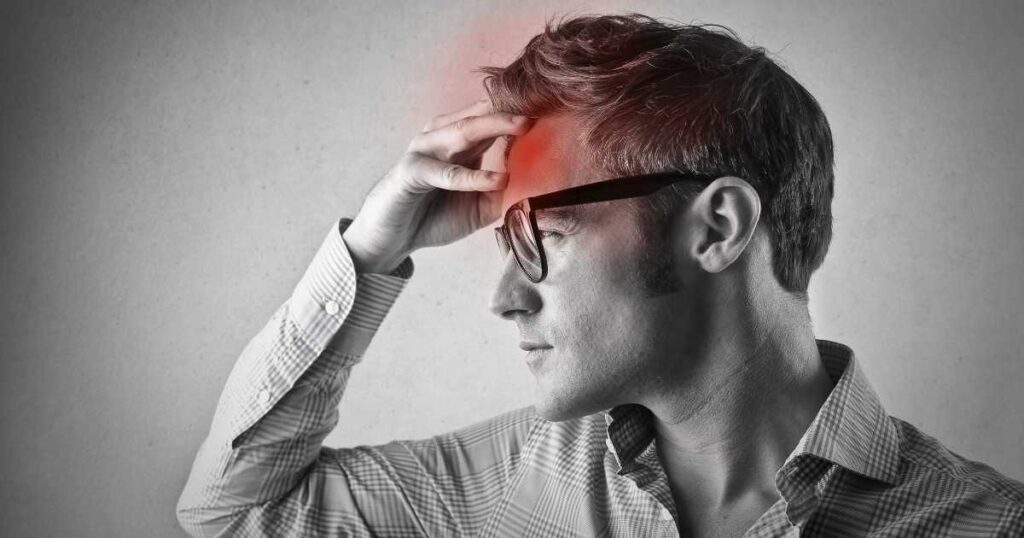
Both migraine headaches and other headache types are strongly linked with tinnitus. Tinnitus and headache occur together in around 50% of people. Specific headache disorders associated with tinnitus include tension headaches, migraine headaches, cluster headaches, and other headaches.
The Migraine Headache Type: Our research team found that in patients with classic migraine, tinnitus and headache occur together around 35% of the time.
The Tension Headache Type: Tension headaches are the most common form of headaches. Research shows that in people with tension headaches, tinnitus and headache occur together 33% of the time.
The Cluster Headache Type: Studies show that for those who experience cluster headaches, the tinnitus severity and decrease in quality of life is worse than in other headache disorders. This headache type is characterized by intense, stabbing pain typically localized around one eye or temple, often occurring in clusters or cyclical patterns.
Researchers suggest a new answer to “What is a migraine?”
If you can experience migraine without headaches, what is a migraine? It’s clear that researchers suggest we need to better define the migraine phenomenon and what this means. The three important components of migraine are neurosensory hypersensitivity, neuroinflammation, and central sensitization.
Neurosensory Hypersensitivity in Migraine
One way to redefine migraine is to classify it as brain sensitivity disorder. A key defining feature of the migraine phenomenon is the increased sensitivity of the brain to various triggers. This sensitivity causes neurological symptoms such as headache pain, dizziness, light sensitivity, neck pain, hearing loss, or tinnitus. Migraine is less about the specific symptoms that manifest, and more about sensory hypersensitivity that leads to the migraine symptoms.
Neuroinflammation in Migraine
Another way to redefine migraine is that it is a neuroinflammatory condition. The single most important molecule in migraine is called calcitonin gene related protein (CGRP). When you have a migraine, CGRP is produced by the nerve that supplies sensation to the face and other brain structures. When you block CGRP with medications, migraines can go away. GCRP production is linked with many of the migraine symptoms, including loud ringing. Importantly, CGRP is fundamentally linked to both neuroinflammation and changes in brain wiring. It’s also the biochemical link between tinnitus and migraines.
Central Sensitization in Migraine
Finally, migraine can also be redefined as a form of central sensitization. Central sensitization is an abnormal increase in the sensitivity of nerves in the central nervous system. A key molecule in this process is CGRP. This heightened sensitivity results in an increase in sensory signals, contributing to changes in brain connections and some chronic changes of the brain in response to stimuli, particularly in the context of conditions like chronic pain, long COVID, tinnitus and migraines.
Can tinnitus be reversed if treated early?
This is one reason tinnitus can become chronic and why the earlier we treat mild tinnitus, the better. Previously, we wouldn’t treat ringing ears until 6 months had passed from the onset because we wanted to see if it would be chronic or not. However, now we know that the sooner we treat it, the higher the likelihood we can make it completely stop before the chronic changes in the brain have occurred. This is because of the phenomenon of central sensitization.
What is otologic migraine?
Otologic migraine (first described by me at UCI) is when the migraine process triggers symptoms of cochlear disorders. Symptoms of otologic migraine can include the following:
- Tinnitus
- Fluctuating hearing loss
- Sensitivity to loud noises (hyperacusis)
- Ear fullness or pain (aural fullness)
- Vertigo
- Dizziness
They are often triggered by the same factors that trigger migraine headaches and frequently respond to migraine treatment. Interestingly, we have only recently discovered that these conditions are related to migraine (see Table 2). Otologic migraine is called ‘vestibular migraine’ when it causes vertigo and dizziness.
Table 2. Conditions that may be manifestations of otologic migraine.
| Condition | Features | Connection to Migraine. |
|---|---|---|
| Vestibular migraine | Recurrent bouts of vertigo/dizziness. | Patients may or may not have a migraine history. |
| Persistent postural-perceptual dizziness (PPPD) | Persistent feeling of unsteadiness, dizziness, or sensation of motion. | 53% of patients with PPPD also had migraine [3]. |
| Benign paroxysmal positional vertigo (BPPV) | Recurrent brief episodes of vertigo, triggered by head movements. | 50% of patients with BPPV meet the diagnostic criteria for migraine [4]. |
| Mal de Debarquement syndrome (MdDS) | Patients experience feelings of “rocking” as if on a boat, lasting for months to years | 73% of MdDs patients treated with a migraine protocol had improved symptoms [5]. |
| Sudden sensorineural hearing loss (SSNHL) | Sudden hearing loss in 3 or more frequencies over a 72-hour period. | SSNHL occurs 1.8x more in patient with migraine than those without [6]. |
| Tinnitus | The perception of ringing, buzzing, hissing, or other similar sounds. | Up to 45% of people with tinnitus also have migraine [7]. |
| Hyperacusis | When sounds are associated with pain, annoyance or fear. | 88% of hyperacusis patients treated with a migraine protocol had improved symptoms [8]. |
| Aural Fullness | A persistent sensation that there is fullness or pressure in the ear. | 54% of patients meet the diagnostic criteria for migraine [9]. |
| Menière’s disease | Episodic vertigo, fluctuating hearing loss, and tinnitus. | 68% of patients meet the diagnostic criteria for migraine [10]. |
What is vestibular migraine?
Vestibular migraine is a subtype of otologic migraine characterized by vestibular symptoms (vertigo or dizziness), often accompanied by other symptoms such as sensitivity to light and sound, nausea, tinnitus, and headache. Nearly half vestibular migraine patients report experiencing tinnitus during attacks.
Vestibular symptoms like vertigo can be debilitating and significantly impact daily functioning. Vestibular migraine treatment typically involves a combination of lifestyle modifications, medications to prevent migraine attacks, and vestibular migraine rehabilitation therapy to improve balance, reduce symptoms, and restore quality of life.
How are migraine and ear ringing related?
Numerous studies have highlighted a heightened prevalence of tinnitus and headache, revealing that up to 45% of tinnitus patients also experience migraine [7].
Most people (and most doctors) have no idea that tinnitus and migraines are connected. These patients can have neck stiffness, facial/sinus/head pressure, motion sickness history, sleep disturbances, sound sensitivity, etc. However, because they never experience tinnitus and headache together, the assumption is that it cannot be migraine related. This is the #1 misconception about tinnitus.
Here are some of the proposed mechanisms for the correlation between tinnitus and migraine:
| Mechanism | Description |
|---|---|
| Trigeminal Nerve Activation | This cranial nerve supplies sensation to the face and scalp and is responsible for head pain and migraine pain. It also innervates portions of the ear, providing a direct neurological connection between tinnitus and migraines. |
| Neurological Hyperactivity | Migraine is linked to abnormal neuronal activity in the brain, and this hyperexcitability may extend to auditory pathways. Tinnitus and migraines share this neurological hyperactivity. |
| Cortical Spreading Depression | Cortical spreading depression involves a wave of decreased brain activity followed by hyperactivity. This process may influence auditory pathways and contribute to people experiencing tinnitus. |
| Vascular Changes | The last step in a migraine involves alterations in blood flow due to activation of the trigeminovascular system. These vascular changes can affect the inner ear and could potentially contribute to tinnitus. |
| CGRP Activation | CGRP is the primary molecule that initiates and perpetuates neurogenic inflammation in the migraine reaction. CGRP receptors have been localized to the cochlear artery, inner hair cells, and neurons in the auditory pathway. |
| Shared Genetic Factors | Genetic predispositions may make individuals more susceptible to both tinnitus and migraines, explaining their co-occurrence in some cases. |
| Central Sensitization | Chronic tinnitus and migraines may share a common mechanism of central (brain) sensitization, where the central nervous system becomes hypersensitive to stimuli, amplifying both pain perception and auditory sensations. |
What triggers tinnitus and migraines?
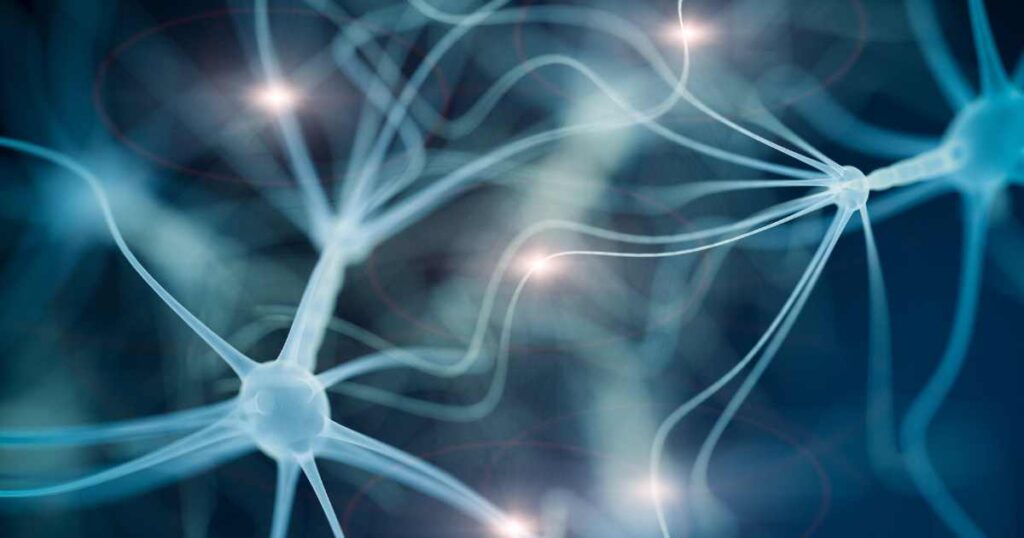
Before looking at migraine triggers, it’s important to look at the relationship between the two processes. A key feature of migraine is that it amplifies sensory hypersensitivity. Tinnitus itself is the result of hyperactive auditory neurons. So when the migraine process is active, it turns the already existing hearing nerve hyperactivity into overdrive, amplifying the tinnitus signal.
Without the activation of migraine, ear ringing is generally quiet and unobtrusive. Patients with tinnitus without migraine generally don’t notice their ringing during the day and only hear it in silence. What they are hearing is the hearing nerve activity that is present as a result of inner ear damage.
When the migraine becomes active, the brain gets very sensitive and amplifies signals in the auditory pathway and auditory cortex, resulting in loud, intrusive tinnitus.
What are migraine triggers?
A migraine trigger is any factor or stimulus that can initiate or contribute to the onset of migraine attacks. Identifying and managing triggers is an important aspect of migraine management and can help individuals reduce the frequency and severity of migraine attacks.
Does tinnitus have triggers?
Tinnitus shares the same triggers as migraine, but people usually do not think about this because they assume the ringing sound is only related to the ear. The higher the migraine activity the louder the ringing. When the migraine activity in the brain settles down the ringing becomes much quieter.
Here are the common triggers that tinnitus and migraines share:
| Trigger | Description |
|---|---|
| Stress | Stress may trigger loud ringing by influencing hormonal release, neurotransmitter imbalances, and the activation of the body’s fight-or-flight response. Stress is the most common trigger associated with the onset and maintenance of loud, fluctuating, bothersome tinnitus. |
| Poor Sleep | Poor sleep can trigger ringing ears by disrupting the balance of neurotransmitters, increasing inflammation, and impacting pain perception. Poor sleep can be an interrupted sleep, sleeping too much or too little, insomnia, shifting sleep schedule, or sleep apnea. |
| Certain Foods | Certain foods can trigger migraine because they are similar to neurotransmitters that trigger tinnitus. That’s why a nutrition examination survey is so important in the migraine work up. Also hunger, dehydration, or intermittent fasting can make your ears ring. |
| Sensory Overstimulation | Sensory overstimulation can trigger tinnitus by overwhelming the nervous system, leading to the release of neurotransmitters and the activation of brain regions associated with pain. |
| Hormones | Hormones like testosterone and estrogen can trigger the migraine process. This is most commonly seen around menopause and with testosterone supplements in men. |
In terms of sensory overstimulation for people with tinnitus, this is most commonly seen with loud noise (e.g., louder ringing after going to a loud event – restaurants, concerts, etc.) or atmospheric pressure changes (usually low pressure like thunderstorms, rainy or windy weather, airplane travel, travel to mountains etc.)
How does tinnitus start?
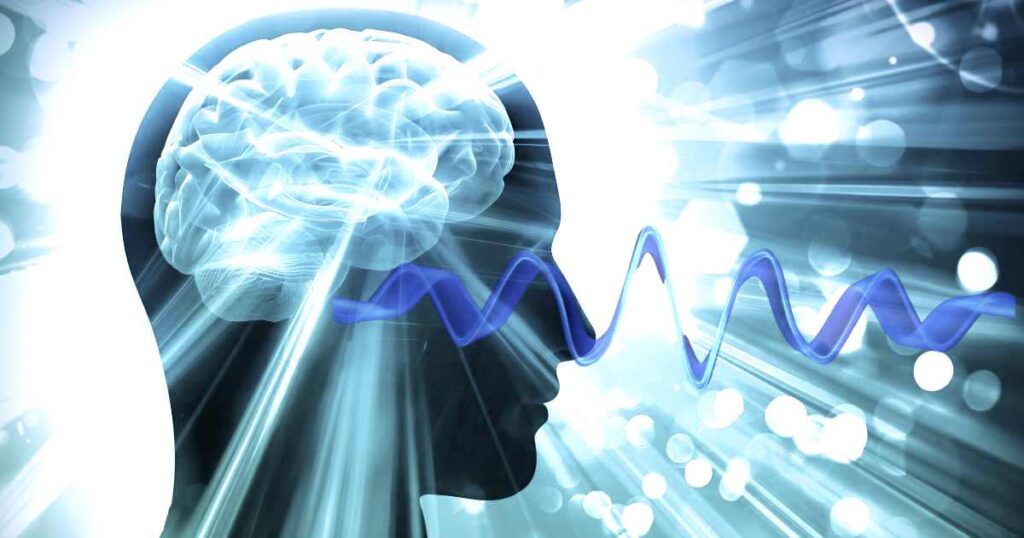
Tinnitus usually starts with some kind of hearing loss, although there are a vast number of contributing causes for tinnitus. Many people who develop tinnitus can identify a specific event or time that is tied to when it became problematic. Research shows that the more traumatic the initiating event, the more severe and persistent the ear ringing.
Common scenarios where patients report first hearing tinnitus:
- Loud noise exposure (shooting guns, concerts, combat)
- Sudden hearing loss
- Viral infections
- Long COVID
- Certain medications (aspirin, IV antibiotics, chemotherapy)
- Any strong inflammatory reaction in the body (e.g., infections, COVID, vaccination, etc)
However, the most common reason why people hear ringing is age-related hearing loss. We all slowly lose hearing as we age. That is why in a very quiet environment or with an ear plug many people can hear a ringing or hissing sound.
Note that age related hearing loss starts in our early 20s and noise induced hearing loss can occur even as toddlers from a prolonged exposure to loud noises or toys. This is because of a progressive loss of the delicate hair cells in the inner ear.
Is tinnitus caused by hearing loss?
Ear ringing usually starts with hearing loss, but it doesn’t cause tinnitus suffering. The cause of clinically significant (loud and bothersome) tinnitus has to do with changes in the brain caused by migraine and changes in brain wiring (central sensitization). This is an important distinction that I want to emphasize.
What causes tinnitus distress?
While up to 50% of people hear ringing when it’s quiet, only around 5-10% of these people experience tinnitus suffering. The cause of tinnitus distress is not the signal from the ear, it’s the network connections with other areas of the brain. These neural networks are instigated by a migraine reaction in the brain.
To illustrate, consider a person who has hearing loss from aging. If you ask them to pay attention, they will be able to hear some kind of ringing sound. However, if this same person has some major life stressor, the innocuous ringing sound can transform into a loud, persistent, and annoying sensation. In other words, it becomes clinically significant tinnitus.
What changed in this scenario is not the actual ringing sound. Rather, the brain’s sensitivity to auditory information was changed due a stress-induced migraine reaction. The good news is that by controlling the migraine process in the brain, we can make the ringing quiet again.
Is there a connection between pulsatile tinnitus and migraines?
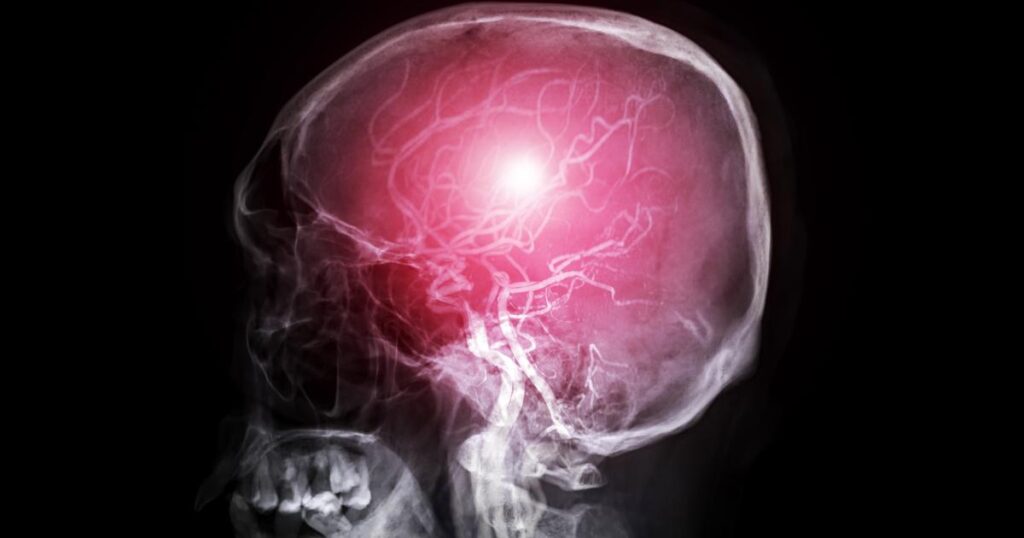
Research findings suggest that there may be a link between pulsatile tinnitus and migraines, as both conditions involve alterations in blood vessels and blood flow within the brain and inner ear. Pulsatile tinnitus is a type of tinnitus characterized by rhythmic or pulsing sounds perceived in the ears or head, often synchronized with the heartbeat. This is called ‘objective tinnitus’ because it can often be detected on a physical exam.
People with pulsatile tinnitus and migraines may find that their other symptoms worsen during the attacks. They may note that symptoms are triggered by factors that also provoke migraine, such as stress, certain foods, or hormonal fluctuations.
Effective management of both conditions often involves a multidisciplinary approach, including lifestyle modifications, stress management techniques, medication management for migraine, and, in some cases, specialized treatments targeting vascular abnormalities or underlying contributing factors.
What are the best treatment options for tinnitus?

The best treatment options for tinnitus must incorporate two things; it must address the migraine activity in the brain and change the way the brain is wired so that it doesn’t pay attention to the ringing signal. In medical terms, this means:
- Reducing neurosensory hypersensitivity, and
- Inducing neuroplastic changes.
Neuroplasticity is the brain’s ability to adapt and change by forming new connections between neurons. So to treat tinnitus, you need to treat the both of the underlying causes – the migraine problem and the brain wiring problem.
Why Ear-Centric Tinnitus Treatments Fail
Many treatment options focus on one of these goals, but the key to tinnitus relief is to address both. Ear-centric tinnitus treatments like sound therapy, tinnitus retraining therapy, or tinnitus hearing aids focus only on using sound to treat tinnitus. They fail to address the neurosensory hypersensitivity that comes with the migraine process.
To accomplish this, you must have a comprehensive rehabilitation program that attacks the ringing problem from multiple angles, called a ‘multimodal’ or ‘integrative medicine’ approach. This should involve three different branches of medicine: traditional, alternative, and lifestyle medicine (see Table 3).
Migraine Treatment for Tinnitus Patients
Over the past 5 years, our academic clinic has had tremendous success treating tinnitus with various interventions that are standard for migraine. This includes the avoidance of trigger foods, the use of nutraceuticals, and the addition of migraine medications (such as tricyclic antidepressants). These are then added to standard tinnitus treatments, like sound therapy and CBT.
This treatment approach has elements that are consistent with typical migraine protocols as well as mainstream tinnitus treatments. In my clinic, this treatment regimen is having success rates in the 85-90% range.
Can you cure tinnitus?
You cannot cure tinnitus in the sense of making the ringing sound go completely away. However, you can cure clinically significant tinnitus, in that you can relieve tinnitus to the point where you regain a good quality of life and where the sound doesn’t bother you anymore.
Note that in the early stages of tinnitus, when it is intermittent, we may be able to make it go completely away, but that is a special circumstance.
Conclusion: Tinnitus is Treatable!
The connections between migraine and chronic ringing are only now becoming clear. Advances in our understanding of otologic migraine in general, and tinnitus in particular, are leading to new treatments that work.
Don’t let anyone tell you “nothing can be done about tinnitus”. Effective treatment for tinnitus and migraines is now available. An integrative medicine approach can achieve not just long-lasting tinnitus relief, but an overall improvement in health and quality of life.
Tinnitus and Migraines References
- E. J. Bousema, E. A. Koops, P. van Dijk, and P. U. Dijkstra, “Association Between Subjective Tinnitus and Cervical Spine or Temporomandibular Disorders: A Systematic Review,” Trends Hear., vol. 22, p. 2331216518800640, 2018, doi: 10.1177/2331216518800640.
- H. M. Al-Khazali, S. Younis, Z. Al-Sayegh, S. Ashina, M. Ashina, and H. W. Schytz, “Prevalence of neck pain in migraine: A systematic review and meta-analysis,” Cephalalgia Int. J. Headache, vol. 42, no. 7, pp. 663–673, Jun. 2022, doi: 10.1177/03331024211068073.
- B. Sarna, A. Risbud, A. Lee, E. Muhonen, M. Abouzari, and H. R. Djalilian, “Migraine Features in Patients with Persistent Postural-Perceptual Dizziness,” Ann. Otol. Rhinol. Laryngol., vol. 130, no. 12, pp. 1326–1331, Dec. 2021, doi: 10.1177/00034894211007233.
- D. Bruss et al., “Migraine Features in Patients with Recurrent Benign Paroxysmal Positional Vertigo,” Otol. Neurotol. Off. Publ. Am. Otol. Soc. Am. Neurotol. Soc. Eur. Acad. Otol. Neurotol., vol. 42, no. 3, pp. 461–465, Mar. 2021, doi: 10.1097/MAO.0000000000002976.
- Y. Ghavami et al., “Management of Mal de Debarquement Syndrome as Vestibular Migraines,” The Laryngoscope, vol. 127, no. 7, pp. 1670–1675, Jul. 2017, doi: 10.1002/lary.26299.
- K. K. Umemoto, K. Tawk, N. Mazhari, M. Abouzari, and H. R. Djalilian, “Management of Migraine-Associated Vestibulocochlear Disorders,” Audiol. Res., vol. 13, no. 4, pp. 528–545, Jul. 2023, doi: 10.3390/audiolres13040047.
- A. Lee, M. Abouzari, M. Akbarpour, A. Risbud, H. W. Lin, and H. R. Djalilian, “A proposed association between subjective nonpulsatile tinnitus and migraine,” World J. Otorhinolaryngol. – Head Neck Surg., vol. 9, no. 2, pp. 107–114, Oct. 2022, doi: 10.1002/wjo2.81.
- M. Abouzari et al., “Efficacy of Multi-Modal Migraine Prophylaxis Therapy on Hyperacusis Patients,” Ann. Otol. Rhinol. Laryngol., vol. 129, no. 5, pp. 421–427, May 2020, doi: 10.1177/0003489419892997.
- O. Moshtaghi et al., “Migraine-Related Aural Fullness: A Potential Clinical Entity,” Otolaryngol.–Head Neck Surg. Off. J. Am. Acad. Otolaryngol.-Head Neck Surg., vol. 158, no. 1, pp. 100–102, Jan. 2018, doi: 10.1177/0194599817739255.
- B. Sarna, M. Abouzari, H. W. Lin, and H. R. Djalilian, “A hypothetical proposal for association between migraine and Meniere’s disease,” Med. Hypotheses, vol. 134, p. 109430, Jan. 2020, doi: 10.1016/j.mehy.2019.109430.




